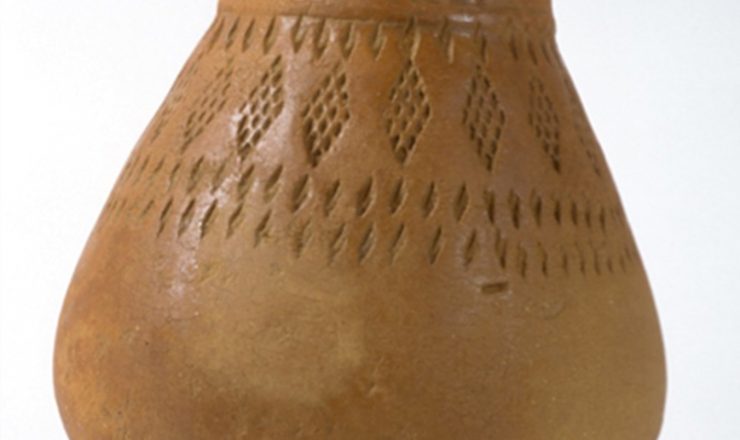Museo Archeologico Nazionale della Lomellina
Vigevano
The Museum
The Museo Archeologico Nazionale della Lomellina (National Archaeological Museum of Lomellina) houses archaeological finds of different ages from the Lomellina area within the evocative spaces of the Sforzesco Castle in Vigevano.
The History

Museo Archeologico Nazionale della Lomellina
The National Archaeological Museum of Lomellina was established to display the archaeological heritage of the territory that was initially dispersed in small local museums and warehouses of the Superintendence, hence to enable its fruition by a wider public. The museum is housed in the spaces of the castle “third stable” and in the adjacent rooms. The creation of an archaeological museum took place in successive phases. Inaugurated in 1998, with the first installation, it was expanded in 2006 with three more rooms and eventually in 2018 with the opening of the hall next to the stable.
The Building

Museo Archeologico Nazionale della Lomellina - La scuderia
The first document concerning the existence of a castrum in Vigevano dates back to 936 A.D., and probably refers to a precarious fortification that was shored up in the subsequent centuries, and became more solid. Around 1340, Luchino Visconti, the first lord of Vigevano, started the construction of the Palace, later enlarged by his successors. In 1471 Galeazzo Maria Sforza commissioned Maffeo da Como the new stables, situated on the western side of the courtyard. However it was Ludovico il Moro who implemented the most extensive interventions, calling on famous artists to collaborate, including Donato Bramante. Il Moro had the courtyard closed and added the last stable adjacent to the tower, reshaped the façades of the buildings with a faux architectural decoration, and created the square, conceived as a courtyard of honour.
After the fall of the Sforza dynasty, the castle lost its characteristics as a noble residence and in the 19th century, it was turned into barracks (remaining so until 1968).
The Collection
The museum itinerary winds through the various rooms in chronological order. Room I houses finds relating to the prehistoric and protohistoric age. The second room displays some Roman period funerary objects (end of 1st century B.C. – 2nd century A.D.). The third room displays objects related to the local settlements and everyday life, while artefacts from late antiquity and the early Middle Ages (3rd – 7th centuries A.D.) are gathered in the fourth room. The last room is used for temporary exhibitions.
-

tomba-gaMale objects from Gambolòmbolo
Inside the decorated urn covered by a bowl, a rich set of objects was found that clearly belonged to a high rank person, given the great concentration of bronzes. The collection comprises decorative objects such as clothing pins, rings, belt fragments (rings and pendants), armillas, and collars.
-

Glass objects
In the tombs (especially of women) of the Roman age, the finds include a number of blown glass vessels, primarily dating back to the 1st century A.D. With elegant forms and pleasing colours, they were used for various purposes, both as containers for food and liquids and as bottles for perfumes, ointments, and balms.
-

Tomb of the warrior
The objects from this tomb, coming from the necropolis of Valeggio, characterise the deceased as a warrior, and include a sword still enclosed in its scabbard, the tip of a spear, the remains of a shield and a knife. Along with these are toiletry items (bronze razor and tweezers), raw ceramic vessels, and a silver coin.
-

Statuette of the winemaker
These statuettes, made in moulds and sometimes painted, appear in the funerary objects of the Lomellina area between the Augustan age and the middle of the 1st century A.D. This statuette depicts a winemaker with billhook and a bunch of grapes, symbol of the deceased’s bond with the earthly world and an image of everyday life.
-

Treasure of antoninianus coins from the locality of Morsella
The treasure comprises approximately 1.400 Antoninianus coins of the late 3rd century A.D. Discovered in 1978 during the ploughing of a field, they were buried along with a clay pouch that originally contained them.
-

Lombard vase
The clay jug is decorated on the neck with a thin painted lattice and on the shoulder with geometric motifs stamped with a punch. This pottery, typically Lombard, remained in use until the 7th century A.D.
Address
Piazza Ducale, 20
27029 Vigevano
Ownership
Ente MiC
Tipology
No profit/donation museum, gallery